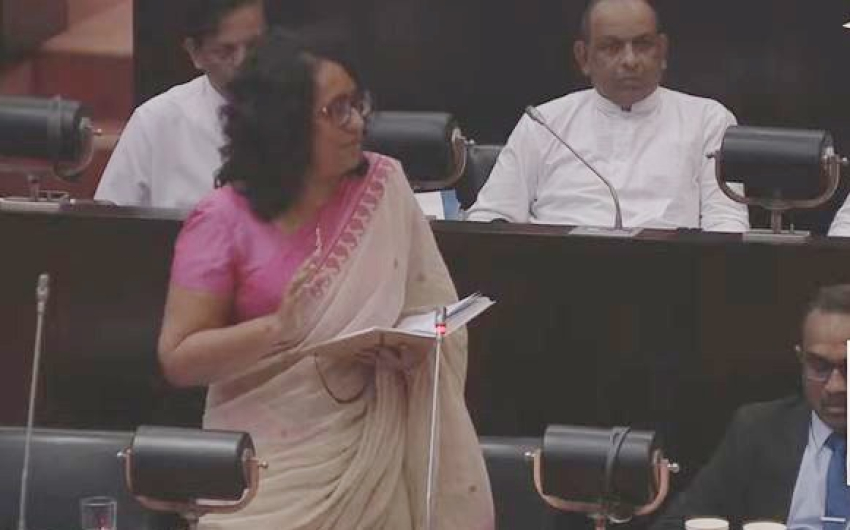The fires have driven thousands of people out of their homesAt least three people are dead and thousands have been displaced by a weekend of bushfires in Australia.On Sunday, the fire emergency's third day, more than 100 blazes were still burning across New South Wales (NSW) and Queensland.Prime Minister Scott Morrison said the military could be called upon to support the 1,300 firefighters working in the two states.Hundreds of civilians have also volunteered to help in affected areas."My only thoughts today are with those who have lost their lives and their families," Mr Morrison added.Officials warn that extreme weather conditions could fuel more fires in the week, including near Sydney.
In Queensland, thousands of people spent the night in evacuation centres while officials assessed whether it was safe for them to return home.Fire officials in NSW have confirmed that more than 150 homes have been destroyed.Although cooler weather on Saturday night provided some reprieve, it is feared that high temperatures, low humidity and strong winds forecast from the middle of the week will fuel further fires that officials will be unable to contain.Officials say they are likely to issue extreme fire warnings for large swathes of the NSW coast on Tuesday, with areas around Sydney thought to be particularly at risk.
"Under these conditions, these fires will spread quickly and threaten homes and lives," NSW Rural Fire Service said in a statement."These conditions will be as bad, if not worse, than those experienced on Friday as they will be across a much broader area including large population centres like Sydney."While clearing affected areas on Friday, fire crews discovered the body of one victim in a burned out car near Glen Innes, about 550km (340 miles) north of Sydney.In the same town on the same day, a woman was found suffering from severe burns. She was rushed to hospital but died shortly afterwards.Carol Sparks, the mayor of Glen Innes, said on Sunday that the town's residents were traumatised."The fire was as high as 20 foot [6m] and raging with 80 kilometres per hour [50 mph] winds," she told Australian broadcaster ABC. "It was absolutely horrific for the people that were impacted."About 1,000 firefighters have been tackling the blazes across New South Wales
Water-bombing helicopters have been deployed to the site of the fires On Saturday, NSW police confirmed that a third person had died after a body was found in a burnt-out home near Taree, a town about 300km north of Sydney. Police said the home belonged to a woman aged 63, but that they wouldn't be able to confirm their identity until a post-mortem had been carried out.In NSW, the worst-hit state, crews have fought hundreds of fires since last month, when two people died while trying to protect their home.Earlier this month, a blaze burned though 2,000 hectares of bush which contained a koala sanctuary. Hundreds of the animals were feared to have died.
Rains lashed NSW earlier this week, providing much relief to farmers. But the storms were not nearly enough to end the long-running drought.Authorities in the state warn that many fires will continue to burn unless there is more rain."We just cannot overstate the profound impact that the drought is having on fire behaviour," Mr Fitzsimmons said.Living with the strain of a devastating droughtWater-bombing aircraft are often flying long distances because of the difficulty of accessing water in dry areas. In some cases authorities have drilled bores to keep up with demand."We've very mindful of the scarcity of water and how precious it is, but the reality is we can't do firefighting without water," Mr Fitzsimmons said.
Australia's fire season risks growing longer and more intense due to climate change, according to scientists.Authorities said they were concerned about the severity of the fires ahead of its hottest months, a year after the nation experienced its warmest summer on record.Officials have confirmed that 2018 and 2017 were Australia's third and fourth-hottest years on record respectively.The bureau's State of the Climate 2018 report said climate change had led to an increase in extreme heat events and increased the severity of other natural disasters, such as drought.Even if global temperatures are contained to a 2C rise above pre-industrial levels - a limit set out in the landmark Paris accord, agreed by 188 nations in 2015 - scientists believe the country is facing a dangerous new normal.Last year, a UN report said Australia was falling short in efforts to cut its CO2 emissions.
Australian spring bushfires 'an omen' for summer seasonore than 100 bushfires across two Australian states are raging in hot and windy conditions that officials warn are unprecedented this early in spring.In Queensland more than 50 fires were burning on Sunday. Forecasters say there is no sign of an end to strong winds that have fanned the flames.One blaze in neighbouring New South Wales has burned more than 56,000 hectares (138,000 acres).An official said the conditions were an "omen" for what may come in the summer."We've never seen this before in recorded history, fire weather has never been as severe this early in spring," said Andrew Sturgess, an inspector with
Fire crews are battling to save people's homes in rural parts of QueenslandA historic lodge in Queensland's Lamington National Park was badly damaged early on Sunday by an out-of-control bushfire.Local Mayor Greg Christensen said damage to the Binna Burra Lodge, built in the 1930s, was "quite extreme".The east coast of Australia has endured two years of below average rainfall creating drought conditions in some areas.
Climate change: ‘Clear and unequivocal’ emergency, say scientists
By Matt McGrath
Environment correspondent
6 November 2019
2402commentsShare this with Facebook Share this with Messenger Share this with Twitter Share this with Email Share
Related TopicsClimate change
Image copyrightAFP
A global group of around 11,000 scientists have endorsed research that says the world is facing a climate emergency.
The study, based on 40 years of data on a range of measures, says governments are failing to address the crisis.
Without deep and lasting changes, the world is facing "untold human suffering" the study says.
The researchers say they have a moral obligation to warn of the scale of the threat.
'Regret' as US begins exit from UN climate accord
Quit 'coal addiction', UN boss warns Asia
Climate change 'making mountaineering riskier'
Released on the day that satellite data shows that last month was the warmest October on record, the new study says that simply measuring global surface temperatures is an inadequate way of capturing the real dangers of an overheating world.
So the authors include a range of data which they believe represents a "suite of graphical vital signs of climate change over the past 40 years".
These indicators include the growth of human and animal populations, per capita meat production, global tree cover loss, as well as fossil fuel consumption.
Image copyrightCOPERNICUS
Image caption
October was the warmest such month on record according to new data
Some progress has been seen in some areas. For example, renewable energy has grown significantly, with consumption of wind and solar increasing 373% per decade - but it was still 28 times smaller than fossil fuel use in 2018.
Taken together, the researchers say most of their vital signs indicators are going in the wrong direction and add up to a climate emergency.
"An emergency means that if we do not act or respond to the impacts of climate change by reducing our carbon emissions, reducing our livestock production, reducing our land clearing and fossil fuel consumption, the impacts will likely be more severe than we've experienced to date," said lead author Dr Thomas Newsome, from the University of Sydney.
"That could mean there are areas on Earth that are not inhabitable by people."
How does this differ from other reports on climate change?
The study echoes many of the warnings that have been reported by scientists including the IPCC. The authors set out to present a clear and simple graphical picture of a broader ranger of indicators that can drive home to the public and to governments that the threat is serious while the response has been poor.
Image copyrightGETTY IMAGES
Image caption
Tree loss needs to stop if countries are serious about climate change
Where it differs is in showing that while things might be bad, they are not hopeless. The researchers show six areas in which immediate steps should be taken that could make a major difference.
These are:
Energy: Politicians should impose carbon fees high enough to discourage the use of fossil fuels, they should end subsidies to fossil fuel companies and implement massive conservation practices while also replacing oil and gas with renewables.
Short-lived pollutants: These include methane, hydrofluorocarbons and soot - the researchers say that limiting these has the potential to cut the short-term warming trend by 50% over the next few decades.Nature: Stop land clearing, restore forests, grasslands and mangroves which would all help to sequester CO2.Food: A big dietary shift is needed say researchers so that people eat mostly plants and consumer fewer animal products. Reducing food waste is also seen as critical.Economy: Convert the economy's reliance on carbon fuels - and change away from growing the world's gross domestic product and pursuing affluence.
Population: The world needs to stabilise the global population which is growing by around 200,000 a day.
So who are the scientists who have endorsed the report?Some 11,000 researchers of all types and varieties from 153 countries have endorsed the researchThe authors say they didn't target individuals so there is a marked lack of some of the bigger names in climate change research.All the details of who's signed the endorsement have been published online."We have rising emissions, rising temperatures, and we've known this for 40 years and we haven't acted - you don't need to be a rocket scientist to know we have a a problem," said Dr Newsome.
What do the authors want to happen now?The researchers are fed up because multiple climate conferences and assemblies have failed to produce meaningful action. However they believe that the growing, global protest movement offers hope."We are encouraged by a recent global surge of concern - governments adopting new policies; schoolchildren striking; lawsuits proceeding; and grassroots citizen movements demanding change."As scientists, we urge widespread use of the vital signs and hope the graphical indicators will better allow policymakers and the public to understand the magnitude of the crisis, realign priorities and track progress."
So what about human population growth?
The idea of trying to influence human population growth is highly controversial and has been deemed too hot to handle by UN negotiators. The authors say that looking the other way is no longer an option.
Human population growth needs to be addressed, say the authorsIt is certainly a controversial topic - but I think that population should be talked about when considering human impacts on the Earth," said Dr Newsome."It's important when presenting these results to look at some positives, and one of the more positive things that we've pulled out of




















